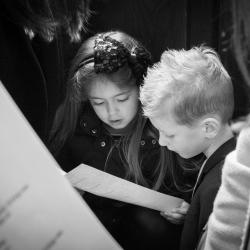Heilige Johannes de Doper
Nieuwstadt, NL
During the Second World War, the church of Nieuwstadt was located where the front stopped in September 1944. It is therefore one of the few churches around Sittard that suffered considerable war damage. The first shelling took place between 19 and 29 September 1944 by the Americans, which incidentally caused little damage. On 12 November 1944, however, when the Americans were in Nieuwstadt, the Germans started firing back with much heavier material. This happened in the morning hours, when a Holy Mass was in progress. The shelling lasted for three quarters of an hour, during which one person was fatally hit and the church suffered considerable damage. This was repeated two days later, but now no one was injured. On 21 November 1944, the English relieved the Americans and Nieuwstadt was evacuated. The village suffered from German grenade and mortar fire for another four months. (Source: [1]





